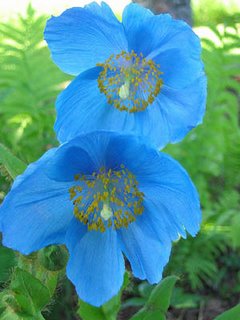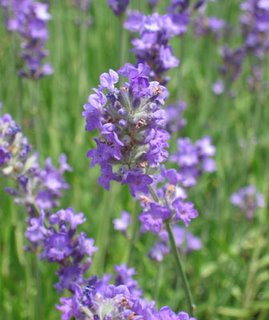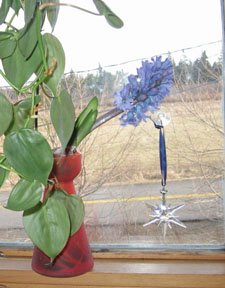Continuing on the theme of last time, I’m still sore, and have added a wide assortment of digs, scratches, cuts and other abrasions to the aches. Yup, the pruning of the rose jungle is well underway, coupled with the removal of last year’s spent teasels. Most roses bite, we all know, and rugosas are particularly toothy…but teasels are snarky too. Despite that, and their tendency to selfseed profusely, I love them….but live in fear that they’ll crossbreed with the goutweed in the front bed and we’ll have Teenage Mutant Ninja Triffids or something equally horrific.
Driving through New Mindless the other day, I was annoyed, but not surprised, to see the asphalt ‘garden centres’ erupting at the Big Box Bullies in that commercial wasteland. So I’m voting with my planting dollars, and don't buy plants from them regardless of what kind of spin they put on their advertisements. And I simply don’t acknowledge the bully from the US that is trampling small communities with its huge blue-signed stores…
Price isn’t everything when it comes to buying plants, or anything else. I am prepared and willing to pay more for product from locally owned and operated nurseries and garden centres where the staff actually KNOW about and love plants. Granted, the plants need to be of very good quality, and nursery operators know that and are doing their best to meet the needs of gardeners, both in having the best stock possible and in bringing in new and exciting plants that we plant people crave. Many of them are developing terrific new websites where we can browse online before we sally forth in search of Berberis thunbergii ‘Nana Aurea’ or Anagallis ‘Wildcat Blue’ or Echinacea ‘Orange Meadowbrite’…They also carry planting, pruning and gardening supplies, garden furniture, home accessories with garden themes, have seasonal shops focusing on accents for spring, summer, fall, Christmas, etc…everything we need to celebrate our home in the garden and our garden in the home.
Some of my favourite places to leave the grocery money (whoops, I mean my disposable income) don’t yet have websites, but what I’ll do is post a list of them and their phone numbers here very shortly. In addition, people have been writing to me at my Saltscapes email address, which is jodi at saltscapes.com of course, to let me know their favourites, as I can’t get everywhere or know everything. So watch for a listing of centres from around the region soon.
In the meantime, Blomidon Nurseries has launched their new web presence, and it’s looking mighty fine to me. They don’t have their 2006 plant list up yet,but I’m assured it’s on the way. Likewise, Brunswick Nurseries has a dandy new website that makes me want to jump in the car and go to Quispamsis right away…featuring the ever-delightful and very knowledgeable “Dr.” Duncan Kelbaugh, whose columns and television presence delight New Brunswick gardeners on a regular basis. And of course while I’m in New Brunswick, I’ll make my annual pilgramage to see Bob Osbourne at Cornhill Nursery, although he now has secure online ordering which means I can get my plant fix from here…though that’s not nearly as much fun, is it?
Our friends at the Hammonds Plains, Truro and Berwick garden centres operated by Springvale Nurseries will soon be open for the season and will also be launching their new website in just a couple of weeks, together with a bright and informative email newsletter, so stay tuned for more about that.
I’m looking forward to a roadtrip down the beautiful south shore of the province very soon, so I can visit my friend Alice at Ouestville Perennials as well as my fellow Aggie and friend Susan Gray at Briarwood Treasures Of course I’ll also be stopping at a host of other plant places, including Bayport Plant Farm, Cosby’s Garden Centre in Liverpool, Spencer’s in Shelburne, and hopefully a unique place called Lavender Hill, between Shelburne and Barrington I think but I can’t find a phone number for it—just know it’s off the 103. Hopefully someone can get me their contact info. And these are just a few of the places I haunt…I’ll also be leaving grocery money (whoops, don’t tell my long suffering spouse that he’ll be eating hamburger for a month!) at Lakeland Plant World just outside of Dartmouth, Hillendale Perennials in Truro, Woodlands and Meadows Perennial Nursery in Truro, West River Greenhouses in Pictou County…well, anyway, you get the picture.
And I’m really delighted to tell you all that the cream that I use year-round for all sorts of purposes, Naturally Nancy’s Protective Cream now has a sparkling new website. I wish I had shares in this family-owned business, because I LOVE Nancy’s cream…I use it on my hands, feet, elbows, face, on cuts, burns, scratches, on my spouse’s hands which are always getting cracked from working in the woods, on my riding boots and horse’s bridle…its gentle formula of beeswax and a few other natural ingredients makes it safe and most of all, highly effectice on dry skin and a variety of ailments.
I leave you all with a very good giggle…it’s official. I’m now a Mad Gardener, which comes as no surprise to anyone who knows me. Point your web browser to David Hobson’s delightful Garden Humour site, where you can join the rest of us who bolding grow where no one has groan before. Take his simple test to find out whether you too qualify as a Mad Gardener, and receive a lovely, personalized and free certificate to print out, hang on your wall and prove to your long suffering spouse what was already suspected.

If you need me for anything…I’m in the garden, pruning, weeding, or just wandering around with that beatific smile on my face. Spring may only be here for a few days, but we’ll take it!












